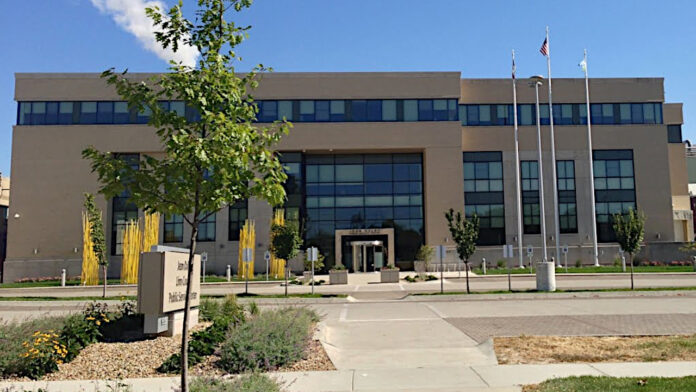
Linn County officials are pursuing a new set of regulations on the construction of hazardous liquid pipelines in the county, seeking to balance economic development opportunities with safety and environmental concerns.
The first reading of an ordinance amending the county’s code of ordinances by adding a new article governing hazardous liquid pipelines was approved unanimously by the Board of Supervisors at their regular meeting Dec. 11.
Linn County Planning and Development director Charlie Nichols noted that at present, “hazardous liquid pipelines are regulated by a patchwork of different federal and state agencies, including the US Department of Transportation, Pipeline and Hazardous Material Safety Administration, also called PHSMA, and then the Iowa Utilities Commission.”
“We don’t have any local regulations for hazardous liquid pipelines,” Mr. Nichols said.
Mr. Nichols also said the proposed ordinance is “fairly narrowly focused on economic development,” which he termed “a public purpose of counties.
“Hazardous liquid pipelines represent both an economic development opportunity for Linn County as well as an economic development risk,” Mr. Nichols said. “The purpose of this ordinance (is) to encourage and take advantage of new economic development opportunities presented by hazardous liquid pipelines, while balancing the need to protect existing economic interests, property values, as well as planned economic growth strategies … hazardous liquid pipelines would represent an opportunity for existing businesses to engage in new markets. There are also existing businesses that could be impacted by the location of a pipeline. So we want to make sure that we are carefully and strategically integrating a new pipeline with any existing, not just businesses, but growth areas in Linn County.”
The proposed ordinance comes just after Wolf Carbon Solutions announced Dec. 2 that it had decided not to pursue construction of a carbon capture pipeline that would have run through Linn County and several other Eastern Iowa counties.
Wolf Carbon had planned to build the carbon sequestration pipeline between Cedar Rapids and Decatur, Illinois. The pipeline, referred to as the Mt. Simon Hub, would have transported liquefied CO2 through a pressurized pipeline from ADM plants in Cedar Rapids and Clinton to an ADM sequestration facility near Decatur, Illinois, where the gas would be pumped underground at the Mt. Simon Sandstone saline reservoir for permanent storage.
The project would have been eligible for up to $1 billion in federal carbon sequestration tax credits, and according to an economic impact study by Goss & Associates, the Mt. Simon Hub would have supported 1,719 jobs during construction and 362 jobs annually during operation in Iowa.
However, the project faced public opposition at several meetings, including a Dec. 5, 2022 meeting at Hawkeye Downs in Cedar Rapids. Opponents to carbon dioxide sequestration pipelines also gathered in February 2023 on the steps of the Iowa Statehouse in Des Moines, where lawmakers had been considering limits to eminent domain for CO2 pipeline projects.
Carbon capture pipelines are touted as an environmentally-friendly solution to deal with carbon dioxide emissions from large-scale industrial facilities, but critics have questioned the environmental claims.
In summary, the proposed ordinance covers four key components – minimum siting distance requirements from occupied homes and gathering places, a road use agreement to prevent damage to public infrastructure during construction, an agricultural impact mitigation plan, and a required consultation area to ensure that area residents impacted by a pipeline would be kept informed on key steps.
Mr. Nichols said there hasn’t yet been public input on this specific ordinance, but that the county has received public feedback during the county’s previous consideration of hazardous pipeline proposals from Summit Carbon Solutions and Wolf Carbon solutions. Much of that feedback, he said, centered on concerns about safety, “which is not a component of this ordinance, but a lot of the public feedback was around separation distances and wanting as large a separation distance as possible. And also we had public feedback expressing concerns that there were not enough protections in our ordinance.”
“I think there might be more interest next week,” county supervisor Ben Rogers said. “I don’t take today as a measure of people’s interest or lack thereof, just maybe (people were) not aware it was on the agenda. But certainly I hope it gets the coverage it deserves.”
County officials have been considering regulations on hazardous liquid pipelines for the past few years, and county supervisor Louie Zumbach said Mr. Nichols “did a thorough job on coming up with something that you’ve been working on for some time. So I appreciate that, and we have another bite at the apple if we see something we want to change.”
The ordinance requires two more readings before taking effect. A schedule for those two readings wasn’t immediately available.




